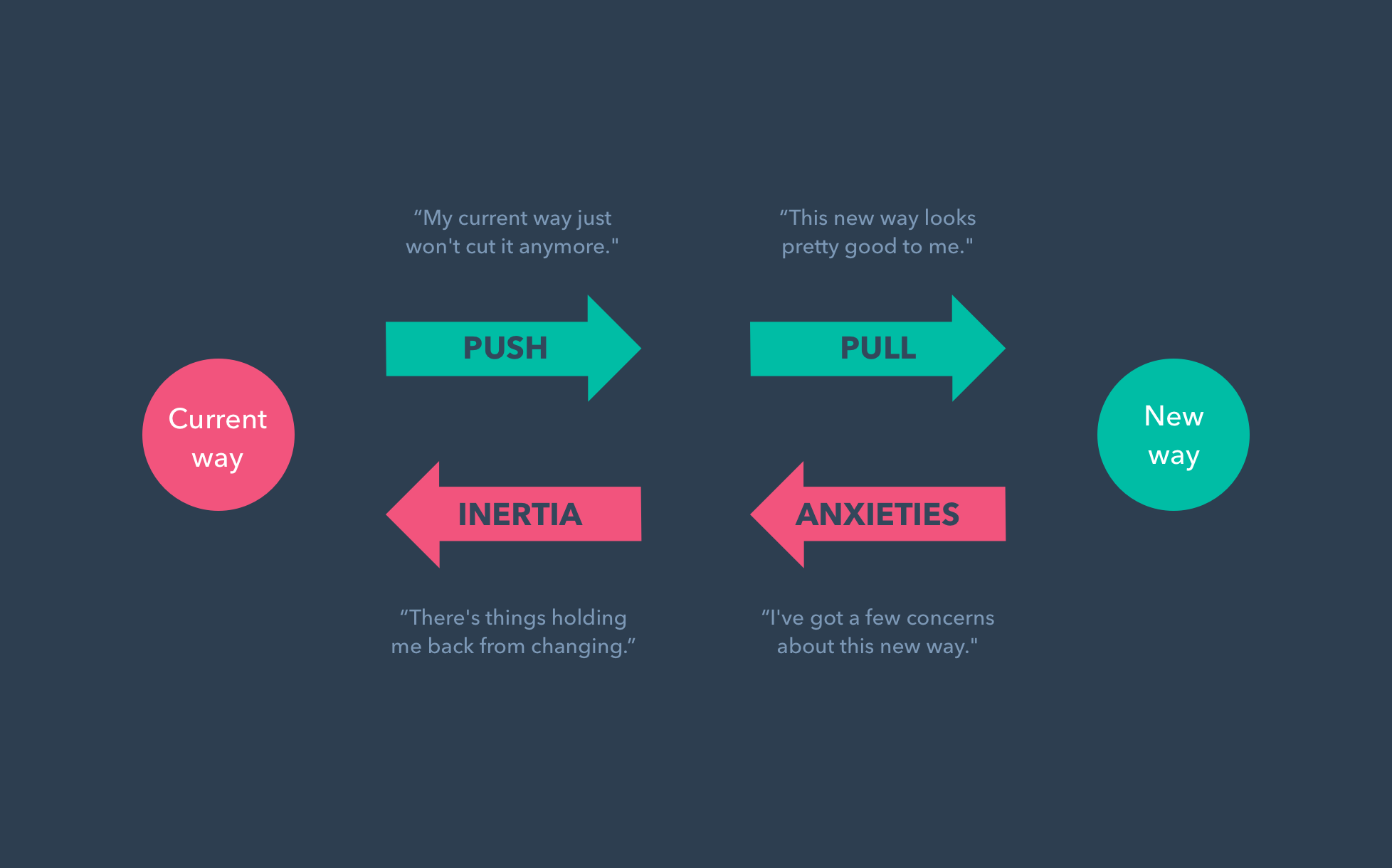Define your goal and messaging

When launching a new product, in the rush to get it ready, the marketing website often ends up getting pushed down the priority list. This is totally understandable, there is so much to do and so little time, it is an easy target for pushing back; you’re not launched yet, so it can wait. But this is an opportunity wasted. You could have a presence out there, starting to build a reputation. More importantly, you could be signing up potential users and gathering essential feedback, gauging audience reactions that can shape your product.
Define the goal
First up, we need to have a clear focus for the page. It’s amazing how many startups end up launching a page that makes perfect sense to the team, but fails to effectively tell the outside world what it actually is they do.
Hopefully, you have a pretty clear idea of the core problem your product solves. Write it down. This should serve as the guide for everything else that goes on the page. Anything that isn’t working directly towards selling that message, shouldn’t be anywhere near the homepage.
The most obvious path is to basically describe what your product does. As an activity or task. Try to avoid this, it will lead to weak messaging that fails to convince. Also avoid high-level emotional statements, without concrete descriptions of your product or service. Try to describe the progress your product will unlock for them — how is their life better since they started using your product?
If we take the example of an analytics product, describing it as a task or activity would be something like “measure how your customers are using your product”. Which is a solid enough start, but it fails to address the underlying reason that you want to do that measurement in the first place. Whereas to describe it in the format of progress, or how will they be better, you need to think further down the line, to the end goal. Few people truly care about measuring usage data for its own sake. But pretty much everyone wants to create a successful product, for product managers, CEOs alike their job probably depends on it. It might be something more like “truly understand your customers” or “start building the next unicorn”. You can probably think of waaay better examples than this! The key is to describe how your potential users will be better off after signing up to your product.
If you find that the problem can’t be conveyed in a succinct sentence, it’s a warning sign that it isn’t well enough defined. If you’re having trouble with this, the Jobs to be done framework is a great tool for defining and aligning on a purpose that can be shared across your sales, marketing, product and engineering efforts. The examples above are based on this way of thinking.
Define the message
With your products core purpose defined, it’s time to define your message. This is how you are going to convince your potential customers that your product is the best solution to their problems. This isn’t easy to get right, but without a strong message, you’re unlikely to cut through the noise and urge your potential users into action.

There are 4 forces that influence a customer switch:
- The push of problems with their current solution the problem
- The pull of the attraction of the new product
- Anxieties and uncertainty of change
- The inertia of existing habits and allegiances
For your messaging to be successful, you should appeal to and reassure these 4 forces.
A popular format to start with is that of the strapline, followed by a sentence or two backing this up ie what are you solving and how do you solve it.
Slack features the headline “Imagine what you’ll accomplish together” followed by “Slack is a collaboration hub for work, no matter what work you do. It’s a place where conversations happen, decisions are made, and information is always at your fingertips. With Slack, your team is better connected”.
This is most obviously appealing to the pull of what you can achieve while using Slack. But it also subtly hints and the push away from your current solution. It positions Slack as a facilitator of your goals, targets and aspirations. Say you are launching a startup, it nudges your brain into thinking about the reasons that you set out on this journey. You are reminded of you want to achieve, and importantly how your life will be better at the end of this journey. Further down the page, it goes into detail about how exactly it will help you. Then backs it up showing the various high profile companies using the service, reassuring the anxiety of the switch. It then finishes up with “Try Slack with your team for free”, reducing the barriers formed by existing habits to switching, if you don’t like it, you haven’t paid anything.
Copywriting
It should start to get a little easier at this point. Now you’ve done the hard task of distilling your product down to its essence, you just need to back it up with evidence that your solution is the best out there. There’s a great article by Erin Kissane on content strategy if you need a helping hand on how to write good content.
If you are sticking to a splash page format (hero and explainer paragraphs), you probably only need a few short sentences at this point. You will want to expand on this later, but right now we’re focused on getting a presence out there. Make a list of the absolute core problems you are solving and how you solve them. Remember to ensure they are all helping towards solving the key problem you outlined earlier. At this point, you probably don’t need much more than about 2-5 sentences, short paragraphs or bullets on key features/benefits that will get your user where they are going.
Have a look at a variety of both competing and unrelated products sites to yours. Product Hunt is a good resource for examples of new product launches. Make a note of the ones that you think are effective. You can borrow some of the approaches to messaging that you think communicate the products well.
If we continue with the analytics example from earlier, Amplitude has some effective messaging. Starting with the hero, you can see the heading and explainer: “Product Analytics for the Digital Era” “Truly understand what makes your users tick, rapidly release better product experiences, and grow your business across web and mobile.” - this establishes the service offering and the insights it can provide. This gives a push away from the current solution “I don’t truly understand my users”, but also a pull towards building better product experiences.
This is then followed by “We help teams build better products”, combined with some examples of how it can help you do this. Really diving into the benefits you will get as a customer. This helps to break the allegiance to the current product, who wouldn’t want to build better products?! The page then finishes up by saying “Over 12,000 companies use Amplitude to grow their digital businesses”. Reassuring potential customers and relieving the anxiety about taking the plunge. If you follow this format and try to serve all 4 forces, you will end up with really clear messaging that is laser focussed on persuading your target customers that yours is the solution for them.
Start writing
By this point, you should have a good idea of what you want your messaging to look like. Settling upon the core value you are providing to your users will make all the subsequent conversations about features, prioritisation and product marketing so much easier; They should all sing from the same hymn sheet. Remember, it only has to be a starting point, you can iterate and test different messaging using usability testing, A/B testing or both once you have your presence established.
Start writing, get everything down first, then you can cut down to the essential. Don’t worry about where things will feature yet. Strong messaging will be the core that everything else will grow from. Remember, write hot, edit cold.
